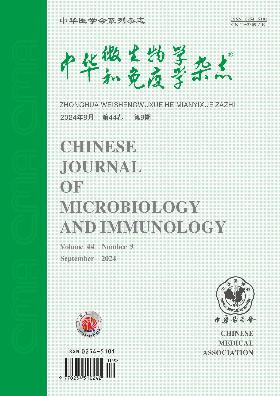Identification of mesenchymal stem-like cells in cerebral cortex of normal rats
Q4 Immunology and Microbiology
引用次数: 0
Abstract
Objective To investigate whether the cells with the characteristic of mesenchymal stem cells (MSCs) could be found in rat cerebral cortex. Methods Rat cerebral cortex samples were digested with typeⅡ collagenase into single cells. Culture medium for MSCs was used for cell culture. The morphology of the cells was observed under a microscope. MSC-specific surface markers were detected by flow cytometry. Differentiation potential favoring adipogenesis or osteogenesis of the subcultured cells was analyzed. Lymphocyte transformation test (LTT) was performed to analyze their immunosuppressive function. Bone marrow MSCs (BM-MSCs) were used as positive control cells in all experiments. Results The fibroblast-like cells isolated from the cerebral cortex of rats were morphologically heomeogeneous after cell culture and grew in a spiral pattern. On the surface of these cells, CD29, CD90 and CD146 were highly expressed at mRNA level, while the expression of CD45 and CD31 at mRNA level were not detected. Moreover, they could be induced to differentiate into adipocytes and osteoblasts. Results of LTT showed that they were functionally equivalent to BM-MSCs in inhibiting the proliferation of spleen lymphocytes induced by concanavalin A. Conclusions This study suggested that the cells with the characteristic of MSCs could be detected in rat cerebral cortex. Key words: Cerebral cortex; Mesenchymal stem cell; Lymphocyte transformation test正常大鼠大脑皮层间充质干细胞的鉴定
目的探讨大鼠大脑皮层是否存在具有间充质干细胞(MSCs)特征的细胞。方法用Ⅱ型胶原酶消化大鼠大脑皮层样品,使其形成单细胞。细胞培养采用间充质干细胞培养基。在显微镜下观察细胞形态。流式细胞术检测msc特异性表面标记物。分析了继代培养细胞的成脂或成骨分化潜能。采用淋巴细胞转化试验(LTT)分析其免疫抑制功能。所有实验均以骨髓间充质干细胞(BM-MSCs)作为阳性对照细胞。结果从大鼠大脑皮层分离的成纤维细胞样细胞经细胞培养后形态均匀,呈螺旋状生长。在这些细胞表面,CD29、CD90和CD146在mRNA水平上高表达,而CD45和CD31在mRNA水平上未检测到表达。此外,它们还能被诱导分化为脂肪细胞和成骨细胞。LTT结果显示,它们在抑制豆豆蛋白a诱导的脾淋巴细胞增殖的功能上与bmp -MSCs相当。结论本研究提示在大鼠大脑皮层中可以检测到具有MSCs特征的细胞。关键词:大脑皮层;间充质干细胞;淋巴细胞转化试验
本文章由计算机程序翻译,如有差异,请以英文原文为准。
求助全文
约1分钟内获得全文
求助全文
来源期刊

中华微生物学和免疫学杂志
Immunology and Microbiology-Virology
CiteScore
0.50
自引率
0.00%
发文量
6906
期刊介绍:
Chinese Journal of Microbiology and Immunology established in 1981. It is one of the series of journal sponsored by Chinese Medical Association. The aim of this journal is to spread and exchange the scientific achievements and practical experience in order to promote the development of medical microbiology and immunology. Its main contents comprise academic thesis, brief reports, reviews, summaries, news of meetings, book reviews and trends of home and abroad in this field. The distinguishing feature of the journal is to give the priority to the reports on the research of basic theory, and take account of the reports on clinical and practical skills.
 求助内容:
求助内容: 应助结果提醒方式:
应助结果提醒方式:


